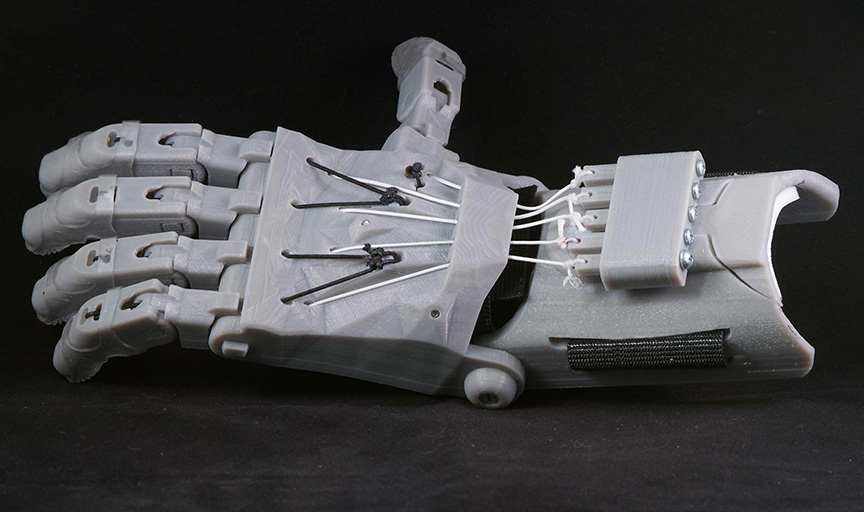There are no limits to what you can hack together with the Leap Motion Controller – which is why this year’s Leap Motion 3D Jam includes an Open Track for desktop and Internet of Things projects! In this post, hardware hacker Syed Anwaarullah walks through his 3D-printed robotic hand project, which appeared at India’s first-ever Maker Faire. The […]
// robots
What if you could disassemble a robot at a touch? Motion control opens up exciting possibilities for manipulating 3D designs, with VR adding a whole new dimension to the mix. Recently, Battleship VR and Robot Chess developer Nathan Beattie showcased a small CAD experiment at the Avalon Airshow. Supported by the School of Engineering, Deakin University, the demo lets users take apart a small spherical robot created by engineering student Daniel Howard.
Nathan has since open sourced the project, although the laboratory environment is only available in the executable demo for licensing reasons. Check out the source code at github.com/Zaeran/CAD-Demo.
When the first boots of a human being land on Mars, imagine being able to RSVP and attend the event from your living room and actually feel like you were there, right next to the astronauts. Equipped with versions of the augmented and virtual reality technologies currently under exploration at NASA, this is an incredibly […]
Controlling a robotic arm to perform real-time tasks can be a real challenge – alternating between a joystick and keyboard. At the LEAP.AXLR8R, Mirror Trainer founder Liz Alessi is using Leap Motion technology to make robotic arms more efficient, natural, and intuitive extensions of our bodies – robots that you could wear like a glove. The robot arm works […]
Ever since the first human stacked one brick onto another, architecture has been concerned with creating immovable things. Even with the rise of smart interconnected environments – where lights, heating, doors, and other systems within a building all work together – the physical structures of our buildings remain the same. As a result, the movements […]
Ever since the first human stacked one brick onto another, architecture has been concerned with creating immovable things. Even with the rise of smart interconnected environments – where lights, heating, doors, and other systems within a building all work together – the physical structures of our buildings remain the same. As a result, the movements and interactions of people within these spaces are shaped by the buildings themselves, like water flowing through a canyon.
This is why architecture and urban design are about more than simply ensuring that our buildings are safe and efficient. Or that they are merely beautiful. Buildings can inspire or isolate, connect or divide, so that debates about everything from the nature of community to the fate of doorknobs have radical social implications. How we live and work every day cuts to the core of what makes us human. But what if buildings could respond to our movements and gestures? What would that change?
Whether taking aerial photos, delivering books, or flipping through the air for fun, quadrotor drones are now more popular than ever. At the same time, developers are continually experimenting with new ways to control them. Here are four videos from Leap Motion developers who hacked quadrotors to create touchless motion-controlled flying machines.




